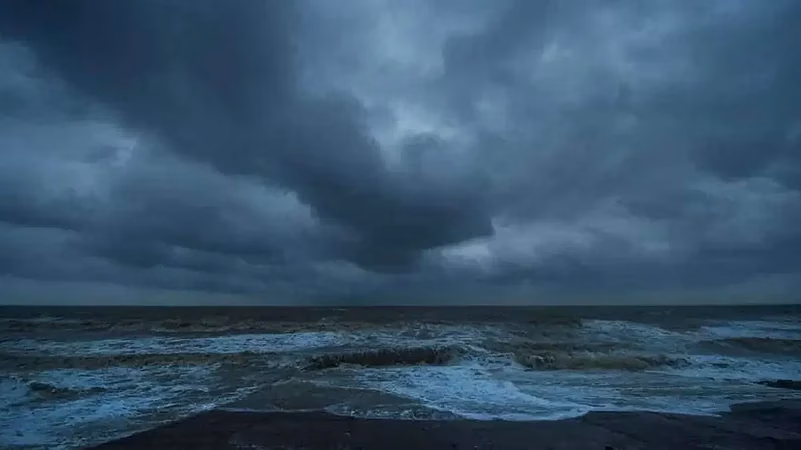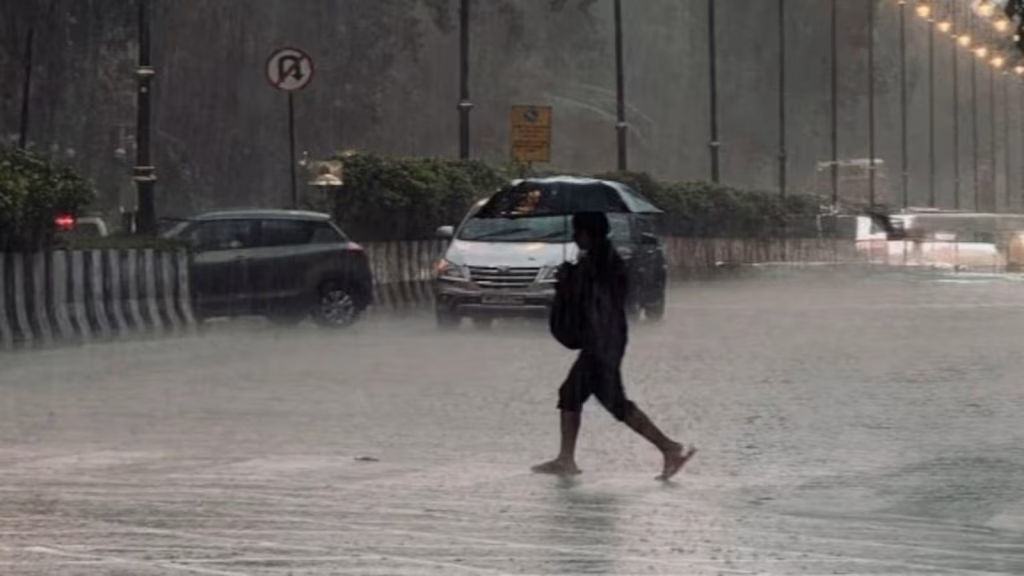A brewing weather system over the Bay of Bengal is set to transform into Cyclone Senyar by November 26, threatening India’s eastern coastline with heavy rainfall and strong winds. The IMD forecasts potential landfall between November 27-30 along coastal Andhra Pradesh, though the exact trajectory remains uncertain.
Table of Contents
Cyclone Senyar: Key Details at a Glance
| Category | Information |
|---|---|
| Current Status | Low-pressure area over Strait of Malacca |
| Depression Formation | November 24, 2024 |
| Cyclone Formation | Around November 26, 2024 |
| Expected Landfall | November 27-30, 2024 |
| Possible Landfall Zone | Coastal Andhra Pradesh/Tamil Nadu |
| Name Meaning | “Lion” (Arabic) |
| Proposed By | United Arab Emirates |
| Wind Speed (Current) | 35-45 kmph, gusting to 55 kmph |
| Peak Wind Speed | Up to 70 kmph by Nov 25 |
What Does ‘Senyar’ Mean?
The name ‘Senyar’ means ‘lion’ in Arabic and was submitted by the United Arab Emirates as part of the North Indian Ocean cyclone naming roster. The Regional Specialised Meteorological Centre (RSMC) in New Delhi, operated by the IMD under the World Meteorological Organization (WMO) and UN ESCAP, assigns these names from a list contributed by 13 member countries.

This standardized naming system helps in tracking storms and improving communication during weather emergencies. Once the system intensifies to cyclonic storm status, it will officially be designated as Cyclone Senyar.
When and Where Will Landfall Occur?
The system is expected to move west-northwest across the Bay of Bengal through the weekend, with the exact landfall location becoming clear only after it strengthens into a full cyclonic storm. Meteorologists caution that it’s still too early to pinpoint whether Senyar will strike the Tamil Nadu-Andhra Pradesh coastline or curve northward toward Odisha or Bangladesh.
Early model guidance suggests potential landfall between late November 27-30, with coastal Andhra Pradesh and parts of Telangana likely facing significant impacts. The American GFS model predicts landfall near north Andhra Pradesh around November 29, while the European ECMWF model suggests cyclone formation could happen as early as November 25.
Which States Will Experience Heavy Rainfall?
Andaman and Nicobar Islands are bearing the first impact. The IMD has issued warnings for heavy to very heavy rainfall (105-204 mm in 24 hours) particularly in the Nicobar Islands on November 24 and 25. Thunderstorms with lightning and gusty winds reaching 40-50 kmph are expected across both island groups.
Tamil Nadu faces a heavy rainfall alert, especially in southern districts. Light to moderate rain with thunderstorms is forecast across the state, with heavy downpours expected in Kanyakumari, Tirunelveli, Tenkasi, Thoothukudi, Ramanathapuram, Virudhunagar, Pudukkottai, Thanjavur, Tiruvarur, Nagapattinam, and Mayiladuthurai districts, as well as Karaikal.
Coastal Andhra Pradesh and Yanam are on alert for heavy rainfall on November 23 and 24, with conditions expected to worsen as the system approaches.
Kerala, Mahe, and Lakshadweep will experience heavy to very heavy rainfall from November 23-25.
Rayalaseema has been issued a heavy rain warning for November 23.
West Bengal and Odisha remain uncertain about direct impact, though the system could delay winter’s arrival in south Bengal and Kolkata by pushing temperatures up if it curves northward.

Impact on Daily Life and Precautions
Multiple Tamil Nadu districts have announced school closures due to persistent rainfall. The Directorate of Shipping Services has warned of possible cancellations of inter-island and mainland vessel services in the Andaman and Nicobar Islands, with harbour ferry operations at Chatham, Phoenix Bay, Hopetown, Dundas Point, and Bambooflat potentially halted.
Fishermen have been strongly advised not to venture into the southwest Bay of Bengal until November 25 and the southeast Bay until November 28, as sea conditions deteriorate rapidly with winds strengthening to 65-70 kmph.
Residents along India’s east coast are urged to stay alert, monitor official advisories closely, and prepare emergency kits as the system continues to intensify.
Second Post-Monsoon Cyclone This Year
Senyar will be the second cyclone to form in the Bay of Bengal during the post-monsoon season this year, following Cyclone Montha which made landfall near Kakinada in Andhra Pradesh on October 28. Montha caused two fatalities and damaged over 80,000 hectares of crops across affected regions.
The Bay of Bengal is notorious for generating powerful cyclones during September through November due to warm sea surface temperatures, favorable wind patterns, and atmospheric instability that support rapid storm development.
For real-time updates and weather alerts, check our cyclone tracking coverage and weather forecast section. Stay informed with official bulletins from the India Meteorological Department and follow safety guidelines issued by local authorities.
FAQs
Q1: What does the name ‘Senyar’ mean and who suggested it?
Senyar means “lion” in Arabic and was proposed by the United Arab Emirates as part of the WMO/ESCAP cyclone naming convention for the North Indian Ocean region. The name will be pronounced as “Sen-Yaar” once the system officially intensifies into a cyclonic storm.
Q2: When exactly will Cyclone Senyar make landfall and where?
The IMD forecasts landfall between November 27-30, 2024, most likely along coastal Andhra Pradesh. However, the exact location and timing remain uncertain as the system is still developing. A clearer prediction will emerge after November 24 once it strengthens into a depression or cyclonic storm, with meteorologists monitoring whether it will strike Tamil Nadu-Andhra coastline or curve toward Odisha or Bangladesh.








